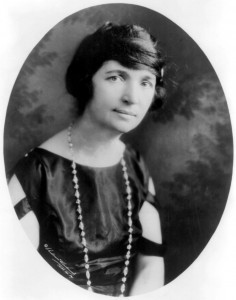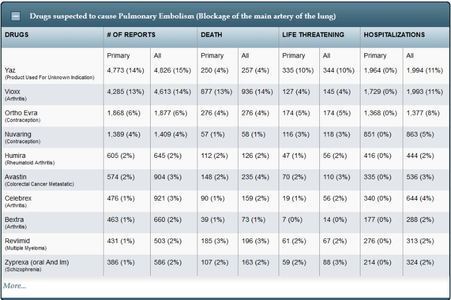I’m a 30-year-old woman in a long-term relationship. If I had a dollar for every time someone made the comment, “If you wait until you’re ready to have a baby, you’ll never have one,” I could retire. This statement is an oxymoron to our behavior as a species, because we have been trying to control family planning as early as 1550 B.C. The first known contraception attempt was found in an Egyptian manuscript called the Ebers Papyrus. It directs women on how to mix dates, acacia and honey into a paste, smear it over wool and use it as a pessary, a medical device inserted into the vagina and held in place by the pelvic floor musculature, to prevent conception.
Today, hormonal contraception is used by 98 percent of women at some point in their lifetimes. Politicians and religious leaders still battle the rights and responsibilities of family planning in 2012. Even more controversial than the current reproductive legislation is the history of the little pill that changed the world. I don’t want children (if I ever find myself at the doors of motherhood it will be purely by accident), I can’t take hormonal birth control, and I think the battles over birth controls and abortions are simply ridiculous (it’s 2012 and this is what we have to fight in the ‘modern’ world?); however, as a woman it is important to understand the history of how modern birth control was conceived.
Contraception
From the Egyptians, contraception evolved from sheep-bladder condoms, to lemons cut in half and used as a cervical cap, to chastity belts, to the various products we have today. In a previous article, I wrote about the various hormonal and non-hormonal birth controls for men on the market or in the research phase. But, more than the interesting inventions for contraception worldwide (check out Time Magazine’s timeline of birth control here), I’d like to look specifically at the long battle for birth control in America.
Comstock Act
As a libertarian, I believe that society could run more efficiently without many of the ridiculous laws that pass through legislation. History and current legislation show that our politicians and leaders think the opposite. In 1873, in an attempt to regulate morality in this country, the Comstock Act was passed. The “Act for the Suppression of Trade in, and Circulation of, Obscene Literature and Articles for Immoral Use,” banned everything from obscene literature, to birth control and abortion devices. Doctors could not even pass on information about sexually transmitted diseases.
Margaret Sanger
 Margaret Sanger was a nurse who saw women suffer and die from unwanted pregnancies. Her own mother had 18 pregnancies, 11 children and died at the age of 40. Sanger worked in New York’s Lower East Side with immigrant and lower class women who often died from complications from unwanted pregnancies and illegal abortions. She opened up the first birth control clinic in 1916 passing out diaphragms, condoms and literature on STD’s and birth control. Nine days later she was arrested and charged under the Comstock Laws. Sanger appealed the conviction, but lost; however, the New York appellate court gave doctors the right to hand out contraceptive information, if prescribed for medical reasons. In 1921, she founded the American Birth Control League, which later became Planned Parenthood. These two organizations later merged and became what we now know as Planned Parenthood.
Margaret Sanger was a nurse who saw women suffer and die from unwanted pregnancies. Her own mother had 18 pregnancies, 11 children and died at the age of 40. Sanger worked in New York’s Lower East Side with immigrant and lower class women who often died from complications from unwanted pregnancies and illegal abortions. She opened up the first birth control clinic in 1916 passing out diaphragms, condoms and literature on STD’s and birth control. Nine days later she was arrested and charged under the Comstock Laws. Sanger appealed the conviction, but lost; however, the New York appellate court gave doctors the right to hand out contraceptive information, if prescribed for medical reasons. In 1921, she founded the American Birth Control League, which later became Planned Parenthood. These two organizations later merged and became what we now know as Planned Parenthood.
In 1936, Sanger helped bring the case of United States v. One Package to the U.S. Circuit Court of Appeals which allowed physicians to legally mail birth control devices and information throughout the country. Yet, it wasn’t until 1965, in the Supreme Court case of Griswold v. Connecticut, that the private use of contraceptives was deemed a constitutional right.
In her lifetime Sanger published various magazines and pamphlets about birth control. She traveled through Europe and Asia promoting and helping develop spermicidal jellies, foam, powders and hormonal contraceptives. It wasn’t until 1950 that the first oral contraceptive, AKA the pill, was developed.
Birth Control and Eugenics
Sir Francis Galton, the cousin and disciple of Charles Darwin, is the father of the applied science of eugenics. One the goals of eugenics was to encourage people of above average intelligence and physical capabilities to breed in order to make an improved human race. The offshoot was racism, classism and discrimination against physically/mentally handicapped.
An often hidden and/or denied history of Margaret Sanger is her beliefs and practice of eugenics. Prior to Hitler’s attempt to create a ‘master race’ there was a strong eugenics movement in America. As many as fifteen states had eugenics laws on the books by 1924, but Virginia was the only state to rigidly enforce the marriage laws prohibiting interracial marriages with the Racial Integrity Act of 1924. Also popular amongst the eugenics movement was forced sterilization. By 1956, twenty-four states had laws providing for involuntary sterilization on their books. These states collectively reported having forcibly sterilized 59,000 people over the preceding 50 years.
How does this tie into birth control and Margaret Sanger? In a lot of her writing she refers to the Eugenics movement. In one of the issues of Birth Control Review she writes, “Birth Control is not merely of eugenic value, but is practically identical in ideal with the aims of Eugenics.” (The article titled “The Eugenic Value of Birth Control Propaganda” can be viewed here). She did not deny or hide her ties to eugenics practices, yet history often overlooks this fact. Even Planned Parenthood glosses over the issue and simply states, “Her views on eugenics and racial issues remain a subject of bitter debate to this day.”
While birth control has allowed women and men to have control over their reproduction rights and responsibilities, and Margaret Sanger has opened many doors for women, it is important to understand the history of why it was developed. An often overlooked piece of American History is that Hitler actually took his ideas for genocide and creating a master race from the American Eugenics movement. A majority of the states had sterilization and marriage laws that weren’t overturned until the 1950’s and 60’s. Don’t get me wrong, I’m ecstatic that we have condoms, birth control pills, and other forms of protection from unplanned pregnancies and STDs. I’m also glad that we have the right to these medications, devices, and basic information without a ridiculous law on morality, but with our ability to genetically modify children, I wonder how long it will be until a new and modern eugenics movement starts to develop; especially since we often overlook this snippet of American history.




















